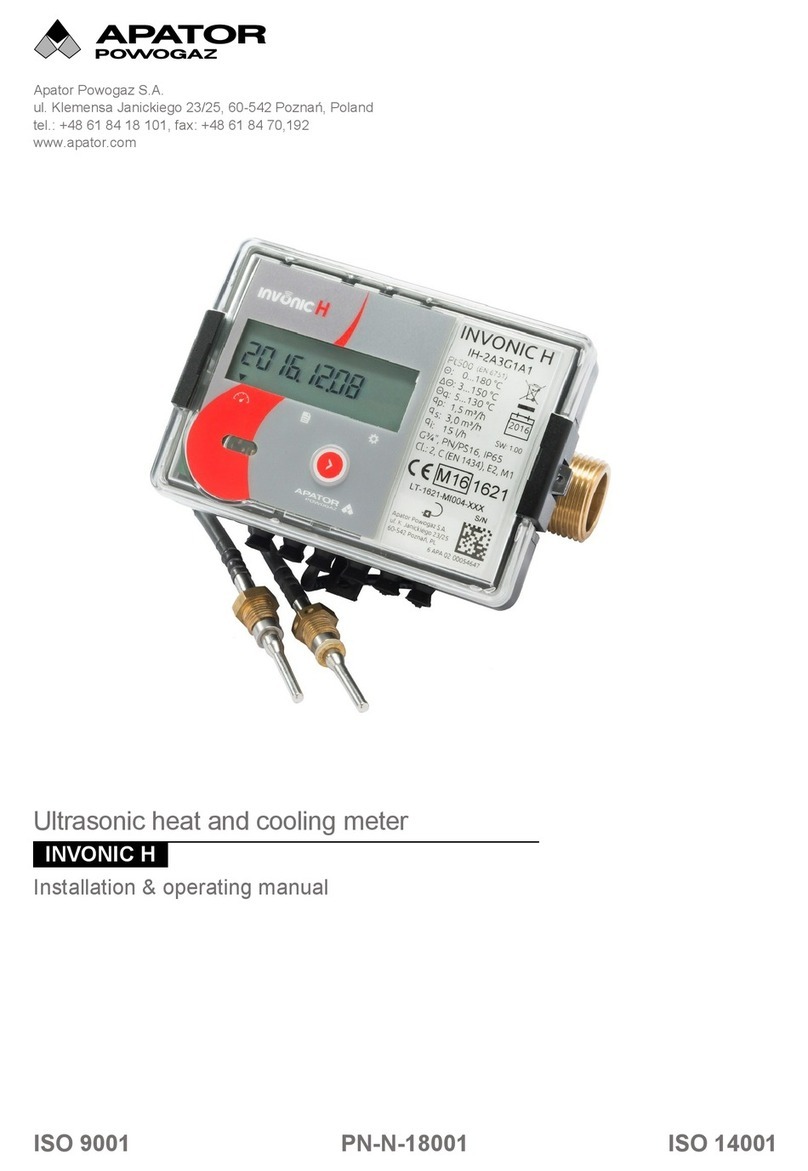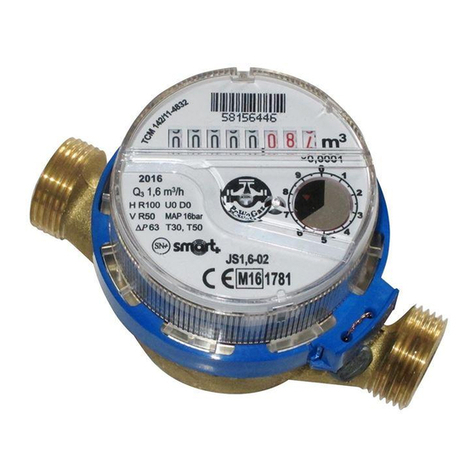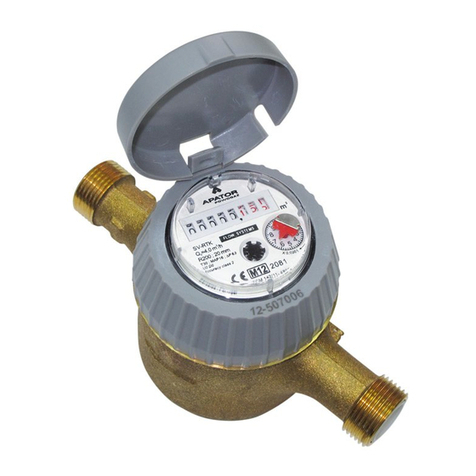
Flanged water meters / flow meters, DN40-400-IP65/68-CE – Operating Manual
Page 8 of 19
3. Operating principle of water/flow meters
The MWN (WPH-01) Nubis water meter comprises a body, metering unit, and counter mechanism. The flow
of water passing through the water meter drives the propeller installed in the metering unit. The propeller is
co-axial to the body bore and rotates a magnet on an axle via a worm and wheel transmission. The magnet
in the wet section of the water meter is coupled to the counter magnet installed in the dry section of the water
meter. A system of gears drives the pointers and barrels of the water meter, which then indicates the
measured flow of water.
The MWN/JS coupled water meter comprises a type MWN master water meter as specified above and a
side water meter. The installed side water meter can be a type JS single-jet vane-wheel dry water meter. A
spring-action switchover valve governs the flow path of the metered water, so that if the water flow is low the
water is diverted to the side water meter and if the water flow is high the water is diverted to the master water
meter. The spring-action switchover valve operates automatically and requires no external source of power.
Operation of the spring-action switchover valve means that the measurement ranges of the master and side
water meters overlap. In this way the coupled water meter has a wide measurement range, which starts from
the minimum volumetric flow of the side water meter and completes with the maximum volumetric flow of the
master water meter.
The MK-01 water meter comprises a body, metering unit, and counter mechanism. The inlet duct by which
the water enters the body is vertical and the outlet duct for the water is horizontal. The flow of water passing
through the water meter drives the propeller installed in the metering unit. The propeller is oriented vertically.
The magnet in the wet section of the water meter is coupled to the counter magnet installed in the dry
section of the water meter. A system of gears drives the pointers and barrels of the water meter, which then
indicates the measured flow of water.
The MH-01 water meter comprises a body, metering unit, and counter mechanism, and optionally, may
feature a fire hydrant standpipe. The inlet duct by which the water enters the body is vertical and the outlet
duct for the water is horizontal. The flow of water passing through the water meter drives the propeller
installed in the metering unit. The propeller is oriented vertically. The magnet in the wet section of the water
meter is coupled to the counter magnet installed in the dry section of the water meter. A system of gears
drives the pointers and barrels of the water meter, which then indicates the measured flow of water.
The JS Impero water meter comprises a metering unit and counter mechanism. The flow of water passing
through the water meter drives the propeller installed in the metering unit. The propeller axis is perpendicular
(vertically oriented) to the body bore centreline. The magnet in the wet section of the water meter is coupled
to the counter magnet installed in the dry section of the water meter. A system of gears drives the pointers
and barrels of the water meter, which then indicates the measured flow of water.
The WI irrigation flow meter comprises the metering unit and the counter mechanism. The flow of water
passing through the water meter drives the vane wheel installed in the metering unit. The vane wheel has
the axis perpendicular to the body bore centreline and operates like an undershot water wheel. A worm and
wheel transmission with a magnetic coupling allow the vane wheel to propel the set of gears for the counter
mechanism in the dry section. The motion of the gears is translated into the meter’s pointers and barrels,
which then indicate the measured flow of water.
4. Selecting the correct size of the water meter
The proper selection of the size criterion (for DN, the nominal diameter) of the water meters should always
the operating conditions, i.e. the mean and maximum operating volumetric flow of water.
A water meter that is too large not only increases the purchase costs, but also reduces the water
measurement indication accuracy when the water flow is low.






























